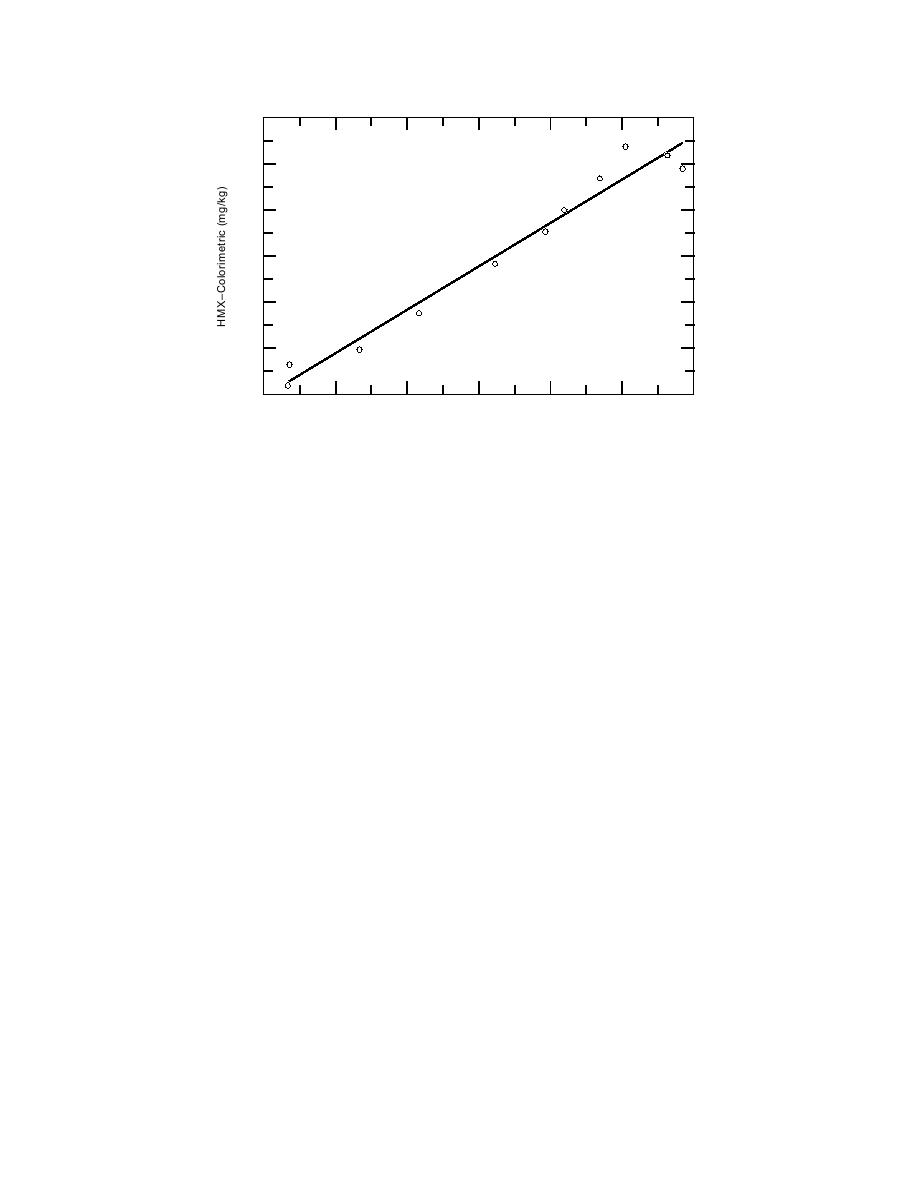
300
250
y = (0.945)x 4.57
r = 0.984
200
150
100
50
0
0
50
100
150
200
250
300
HMXHPLC (mg/kg)
Figure 9. Correlation of HMX concentration estimates from the colorimetric on-site
method with those from RP-HPLC analysis of the same acetone extracts.
Correlation analysis between the original HMX
fully characterized. According to the DTECH kit,
estimates using RP-HPLC and the HPLC analy-
an HMX concentration of 15 mg/kg would
ses for the acetone extracts of these 11 samples
respond as an RDX concentration of about 1
yielded an r of only 0.795, with slope of 1.44 and
mg/kg. This cross-reactivity is reported at the
an intercept of 3.27. For 10 of the 11 pairs, the origi-
detection limit and the level of cross-reactivity at
nal analysis was higher than the later analysis. The
higher concentrations was not provided. In any
mediocre agreement of these results, compared to
case, the presence of HMX appears to interfere
the excellent agreement of the colorimetric versus
to such a degree as to make the DTECH test
HPLC analyses on the same extract, could be
unusable at Fort Ord.
explained in two ways: 1) the difference is ascrib-
Unfortunately, neither of these on-site methods
able to soil subsampling, or 2) the difference is
will provide reliable estimates for RDX. Another
attributable to the different extraction methods
option would be to use RP-HPLC as an on-site
used. Results obtained at CFB-Valcartier, where a
method. Racine et al. (1992) used on-site HPLC
large number of samples similar to these from Fort
for site characterization of explosives residues at
Ord were analyzed for HMX using these two
an impact area on Fort Richardson, Alaska. The
extraction methods, yielded a slope of 0.99 and a
advantage of this approach is our ability to obtain
correlation coefficient of 0.97. This result, coupled
HMX, RDX, and TNT estimates from a single
with the extraction time study presented here
analysis. The disadvantage is the requirement of
(Table 7), and the original development work on
having to find a location to set up an HPLC
this on-site method (Jenkins and Walsh 1992), all
instrument and the need for a more highly trained
indicate that the two different extraction methods
chemist on site to provide this type of analytical
yield equivalent results, particularly for sandy
support.
soils. This reinforces our conclusion that the reli-
ability problem is with soil subsampling rather
Composite preparation
than extraction or analysis of the extracts.
Clearly, the results above demonstrate that the
The results from the DTECH method appear to
use of single discrete samples to represent grids
provide little or no utility for this application.
of even modest size at the inland ranges at Fort
While the method is generally quite specific for
Ord will result in enormous uncertainty in con-
RDX in many applications, it has a significant
centration estimates for these explosives analytes.
cross-reactivity to HMX, which may not have been
Another approach is to collect a number of dis-
19




 Previous Page
Previous Page
